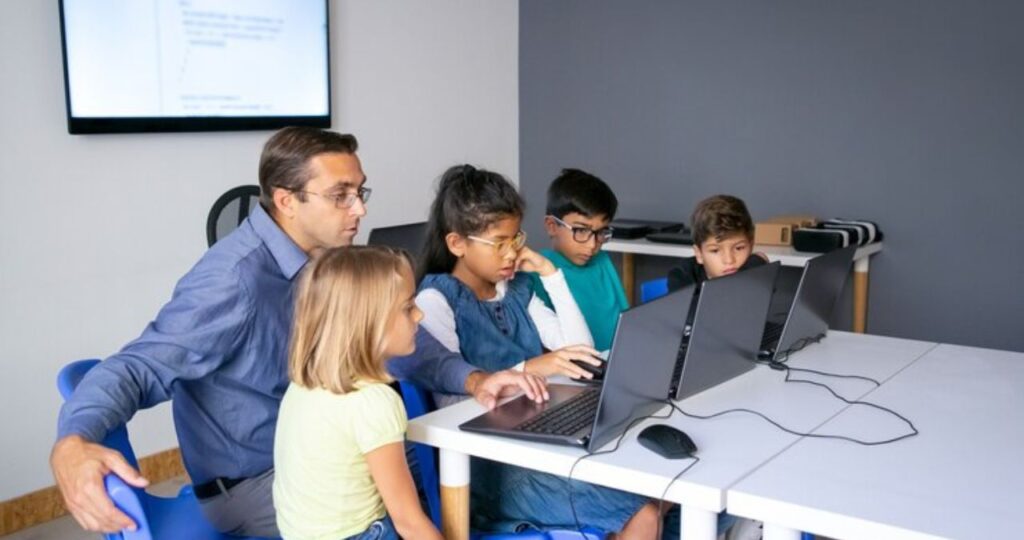In an era where education is rapidly evolving to meet the demands of a dynamic world, Classroom 15X emerges as a groundbreaking model for fostering creativity, collaboration, and critical thinking. More than just a physical space, Classroom 15X represents a pedagogical revolution—a fusion of cutting-edge technology, flexible design, and student-centered learning. This article delves into what makes Classroom 15X a blueprint for the future of education and how it empowers learners to thrive in an interconnected, innovation-driven society.
What Is Classroom 15X?
Classroom 15X is a next-generation learning environment designed to break free from the constraints of traditional classrooms. Unlike rows of desks facing a chalkboard, this space prioritizes adaptability, technology integration, and experiential learning. Whether a physical room, a hybrid setup, or a virtual ecosystem, Classroom 15X is defined by its ability to evolve with educational trends and student needs.
Core Principles:
-
Flexibility: Modular furniture, movable walls, and reconfigurable zones.
-
Technology Integration: AI-driven tools, AR/VR, and IoT devices enhance engagement.
-
Student Agency: Learners co-design projects and drive inquiry-based goals.
-
Global Connectivity: Partnerships with schools, experts, and industries worldwide.
Key Features of Classroom 15X
-
Smart Learning Ecosystems
-
Interactive Surfaces: Touchscreen whiteboards and holographic displays replace static screens.
-
AI Tutors: Personalized learning assistants adapt to individual student pacing.
-
IoT Sensors: Monitor air quality, noise levels, and lighting to optimize focus.
-
-
Collaborative Zones
-
Makerspaces: 3D printers, robotics kits, and prototyping tools for hands-on innovation.
-
Breakout Pods: Soundproof nooks for small-group problem-solving.
-
Virtual Reality Labs: Immersive simulations (e.g., exploring ancient Rome or molecular structures).
-
-
Curriculum Reimagined
-
Project-Based Learning (PBL): Students tackle real-world challenges (e.g., designing sustainable cities).
-
Micro-Credentials: Digital badges certify skills like coding, data analysis, or creative storytelling.
-
Global Classrooms: Live collaborations with peers in other countries via AR platforms.
-
The Pedagogy Behind the Innovation
Classroom 15X isn’t just about gadgets—it’s rooted in evidence-based teaching strategies:
-
Flipped Classrooms: Students review lectures at home and use class time for hands-on application.
-
Gamification: Leaderboards and quests make mastering algebra or history feel like an adventure.
-
Social-Emotional Learning (SEL): Mindfulness corners and emotion-tracking apps support mental well-being.
Case Study: At a pilot school in Stockholm, Classroom 15X reduced achievement gaps by 30% in one year. Students engaged in a climate-action project used VR to visualize rising sea levels and AI to model policy solutions, presenting their work to the European Parliament.
Benefits for Students and Educators
-
For Students:
-
Deeper Engagement: Interactive tools and choice-driven projects boost motivation.
-
Future-Ready Skills: Coding, critical thinking, and cross-cultural collaboration.
-
Inclusivity: Adaptive tech supports learners with disabilities (e.g., AI translators for ESL students).
-
-
For Teachers:
-
Data-Driven Insights: Analytics dashboards track student progress in real time.
-
Professional Growth: PD workshops on AI tools and student-led pedagogy.
-
Global Networks: Co-teach with international educators via holographic telepresence.
-
Challenges and Considerations
-
Cost and Accessibility: High-tech setups require significant investment, risking equity gaps.
-
Teacher Training: Educators need ongoing support to harness new tools effectively.
-
Screen Time Balance: Ensuring tech complements—not replaces—human interaction and creativity.
Classroom 15X in Action: Real-World Examples
-
Singapore’s “Future Schools” Initiative: Classrooms use AR to simulate science experiments and AI to tailor math problems.
-
Rural India’s Hybrid Model: Solar-powered 15X hubs with satellite internet connect remote students to global mentors.
-
University Partnerships: MIT’s “STEAM Lab” collaborates with K-12 schools to prototype 15X concepts.
The Future of Classroom 15X
As AI, quantum computing, and neuroeducation advance, Classroom 15X will continue to evolve:
-
Brain-Computer Interfaces (BCIs): Direct neural feedback to customize learning paths.
-
Holographic Teachers: AI avatars deliver lessons in multiple languages.
-
Climate-Neutral Design: Solar panels, recycled materials, and green roofs integrate sustainability into daily learning.
Conclusion: Redefining Education for Generations
Classroom 15X is more than a trend—it’s a testament to education’s power to adapt and inspire. By blending technology with empathy, creativity, and global awareness, it prepares students not just to navigate the future, but to shape it. While challenges like funding and training persist, the model’s success in pilot programs offers hope for scalable, equitable transformation.






